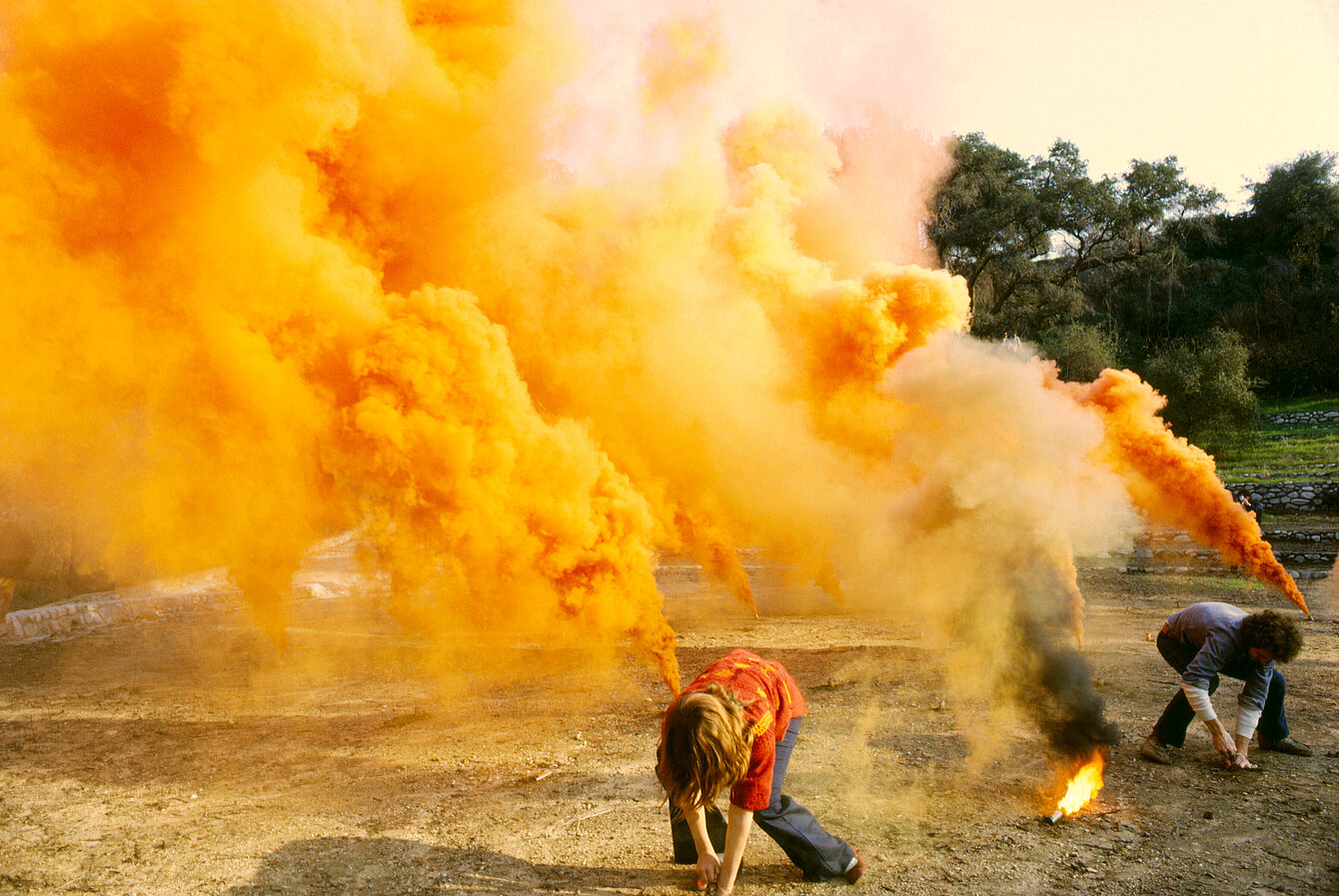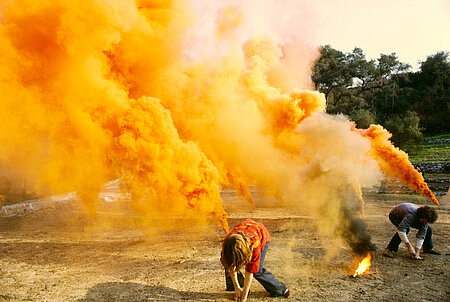Where art can happen. The early years of CalArts is dedicated to the first 10 years of the art academy and brings together for the first time the teaching concepts represented there with the artistic practices developed from them in a group show. Around 100 works by around 40 artists will be on display, including works that are being presented to the public for the first time.
The historical exhibition traces various situations in which art can be created. This is entirely in the spirit of John Baldessari, who, as one of the formative teachers, pursued the view that art cannot be taught, but that it is about creating situations ‘where art might happen’, as he said in an interview in 1992. Key figures such as Allan Kaprow, John Baldessari, Judy Chicago and Miriam Schapiro and their fundamental ideas of Fluxus, conceptual art and feminism are highlighted.
In addition to artworks and scientifically prepared archive material, oral history interviews with 13 CalArts artists were filmed especially for the exhibition, who, as contemporary witnesses, provide individual insights into the situation at the time. In this way, the teaching methods, the historical context and the interdisciplinary connections between the artistic practices become visible in an exhibition for the first time. The zeitgeist of the 1970s is also conveyed by stories of legendary pool parties, courses such as ‘Advanced Drug Research’ and the renunciation of grades and curricula in everyday school life. The interviews also reveal a wide range of personal and interpersonal details.
The exhibition makes it clear that within the different approaches at CalArts, cross-media, interdisciplinary formats were particularly strongly represented. Even painterly positions have, in the broadest sense, incorporated elements that play a role in film and performance, as can be seen in the works of Eric Fischl and Ross Bleckner, Lari Pittman or Mira Schor and others.
The interdisciplinary nature of the school is evident in various artistic practices. This connection between Post Studio and Fluxus was characterised by key figures such as Wolfgang Stoerchle with his conceptual video and performance works and Stephan von Huene with his kinetic sound sculptures. References to both the environment of Post Studio and the Feminist Art Programme can be found in the work approaches of artists such as Ericka Beckman, Mike Kelley, Jim Shaw, Tony Oursler and Carrie Mae Weems.
The exhibition is accompanied by an extensive research catalogue on the early years of CalArts (published in a German and an English edition by Prestel / Prestel DelMonico, February 2020) as well as a small bilingual book with a text on the Austrian connections.
Spector Verlag has also published the book ‘Tacit Knowledge. Post Studio/Feminism - CalArts (1970-77)’, edited by Annette Jael Lehmann and Verena Kittel with the collaboration of students from the Institute of Theatre Studies at Freie Universität Berlin.
Translated with DeepL.com (free version)





















